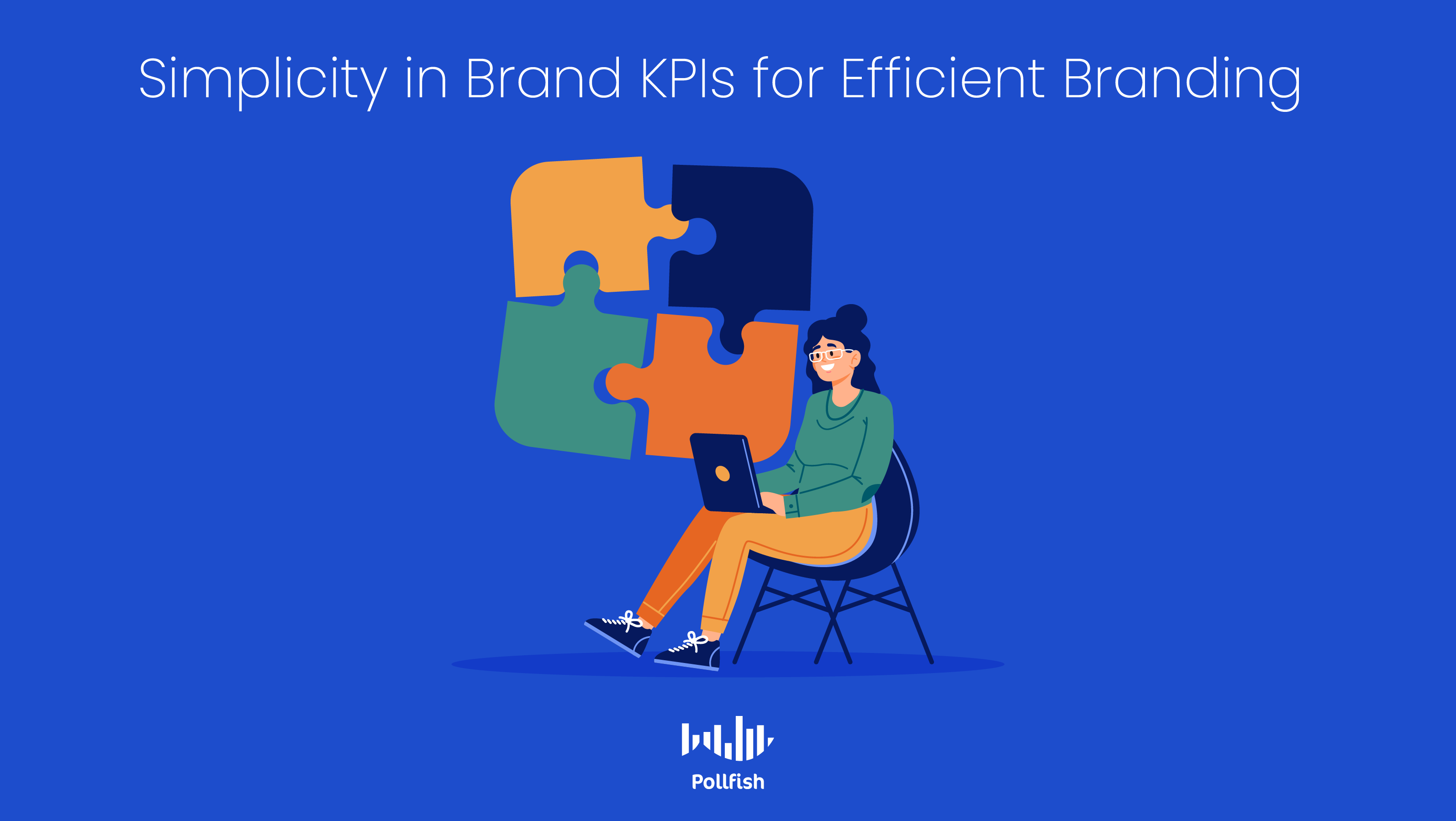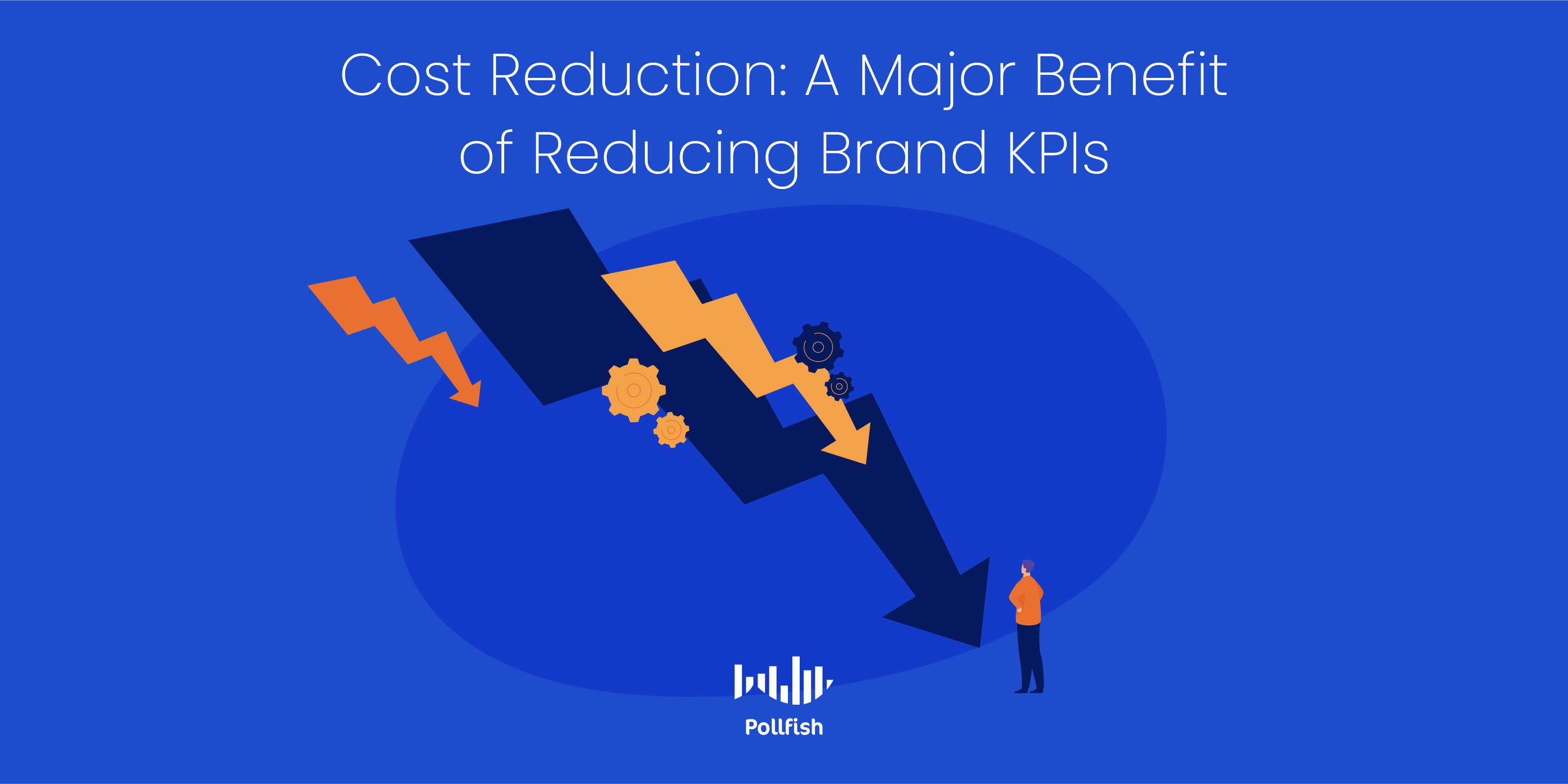Keeping Your Brand KPIs Simple For Efficient Branding Campaigns

If you’re a business owner, researcher or marketer, you’re probably well aware of the various brand KPIs in existence that you can measure, track and apply to maintain your branding efforts and overall business success.
It often appears imperative to keep track of as many brand KPIs as possible to fulfill all your branding market research and general branding objectives. However, although it may seem counterintuitive, relying on fewer brand KPIs is the key to successful branding,
This is because, although it is important to use data for decision-making, dealing with too much may incur big data problems, which refers to large volumes of structured and unstructured data that overburdens a business on a daily basis.
Nearly 36% of companies don’t use all the data they possess and 47% are planning to implement a data analysis tool in the future. All businesses should avoid excess data, as it does not provide the utility that data is supposed to support: making insights-based decisions to propel your business to success.
This article explains why you should keep your brand KPIs simple, you to do so with market research, while maintaining efficient branding campaigns.
Understanding Brand KPIs
There are so many KPIs that you already track or have heard about, at the very least. For the sake of clarity, a brand KPI refers to key performance indicators that relate specifically to your brand and its perception.
This involves maintaining your brand’s reputation, promotional strategies, image, symbolism and all else that distinguishes your brand from others and makes it visible as a brand.
As such, it deals with performance indicators in the following subtopics of branding:
- Brand visibility
- Social mentions
- Share of voice
- This includes various measurable brand awareness metrics, such as the reach of online mentions, PPC, website traffic and others.
- Brand awareness
- Aided and unaided awareness
- Aided Research, aka Brand Recognition: This ability of customers to recognize your brands when they view it among others, including your competitors and non-competitors.
- Unaided Research, aka Brand Recall: This measures the ability of customers to bring the name of your brand to mind without seeing it on a list first.
- Customer Acquisition Cost
- Aided and unaided awareness
- Brand trust
- Time spent on website and social media
- Conversion rate
- Email subscriptions
- Bounce rate
- Brand equity
- Customer preferences (choosing your brand over a competitor)
- Net Promoter Score (NPS)
- Customer Lifetime Value (CLV)
Each of these sub-topics of branding include various metrics and KPIs that you can study to maintain brand tracking needs. However, there is an over-abundance of these KPIs and many SaaS providers and agency marketers take advantage of them, using them as advertising and marketing fodder designed for you to purchase their services.
While branding is critical for business upkeep and data is necessary to understand your target market and make informed decisions, too much branding data can inadvertently hurt your organization.
The Importance of Keeping Brand KPIs Simple
There are several cases to be made in favor of reducing your brand KPIs. After all, there are so many business needs that require your attention — not to mention the need to preserve your resources and allocate them correctly, whether they involve money, time, managerial oversight, etc.
As such, too many such KPIs can easily lead to employee burnout and a host of other issues. The following explains the four major reasons why you should simplify your brand KPIs.
Reducing Your Costs
No matter how large your marketing or market research budget, you need to be economical with your expenditures. Money is involved in many of the metrics mentioned above, including many others. This is because you’ll generally be paying when obtaining data for decision-making.

Some data providers, such as Google Analytics are free, but it will still cost your analysts and other team members time to parse through these metrics, some of which you’ll find are surplus and unnecessary to improve your branding.
As such, your team members will face difficulties to prove that these KPIs bring value to the business, undergoing pressure to show the ROI of their activities.
By using fewer KPIs, your team members can invest their time in showing the value of the data that they generate. As such, by scaling back on the number of KPIs you use, you’ll be minimizing operational costs. By doing so, you can properly allocate your budget across your business to focus actions based on findings from KPIs that matter the most.
Cutting through the Noise
To avoid the aforementioned big data issues, you should go by the adage of “less is more.” By reducing the amount of brand KPIs you track, thereby decluttering your data arsenal and analyses, you can focus on the meaningful, quality data, the kind that plays a major role in your key decision-making processes.
To cut through the noise, you’ll need to evaluate your data set(s) and identify what kinds of data are important to study, what kinds provide valuable insights and which you can use to make improvements. When mulling this over, you’ll notice various brand KPIs that receive little consideration, the kind you hardly look at, let alone analyze.
Although determining which metrics that matter most can be challenging, especially when it comes to reaching consensus among team members, narrowing down your core measurement metrics and KPIs will grant clarity for the business and a direction for making progress.
Creating A Sense of Focus on What Matters Most
Minimizing the types of brand KPIs you track and work towards optimizing involves zeroing in on a particular set of matters. These can be quantifiable metrics or more abstract concepts, such as brand equity or top-of-mind awareness.
Either way, when you downsize the amount of your brand KPIs, you’ll be able to create a greater focus around your branding objectives, which extends to your overall business objectives. As such, marketing departments (which usually head branding initiatives) will have a clearer focus of goals and will require using less time and other resources to increase the ROI of their KPIs.
A clear and precise focus of goals and objectives will also make it easier to communicate with the C-level suite of a company. This is because using fewer KPIs simplifies the process of explaining the metrics you’ll need to justify using. In turn, this will result in simpler communication and less documentation in PowerPoint slides, for example.
Avoiding Big Data Pitfalls
Dealing with big data can be useful, but it often leads to a surplus of unheeded information that remains unused and is ultimately discarded.
There are various other problems that can arise from big data, such as large, unorganized swaths of information, imprecise insights, a lack of integration, a lack of data democratization and more.
Many times, brand KPIs involve using existing data to calculate specific metrics, which creates not only more work, but more data clutter. While some metrics may be more important than others — this will vary from company to company — you should avoid using too many as a rule of thumb. The more KPIs you’ll need to track, the larger your pool of big data will be, which will, consequently, lead to more data problems.
Which Brand KPIs You Should Measure and Heed
While you should use brand KPIs sparingly, there are still certain KPIs that are crucial for your brand to track and optimize to ensure business success. As stated earlier, these will vary from company to company; however, there are certain key aspects that you should observe regularly.
Some of these are metrics, just like many KPIs. Others are broader concepts that are invaluable for your business, as they revolve around understanding your consumers. As such, the most ideal approach for gaining insights into your target market is by conducting market research.
There are various market research techniques you can apply to understand your consumers; survey research is the most important because it allows you to cut back on tracking KPIs and instead lead a customer-centric approach when it comes to improving your business.
The following provides the key KPIs and major concepts you should record and observe regularly in order to adapt to your customers. Your company should not use all of them, since minimizing your KPI reliance is a must.
- Customer Experience
- This involves the totality of feelings, experiences and perceptions your customers have about your brand.
- You can track yours via the customer experience survey.
- The KPIs include:
- The Net Promoter Score.
- Customer Satisfaction Score Survey (CSAT) Survey
- Customer Effort Score, via the CES survey
- Brand Awareness

- This is the level of consumer consciousness of a company. It involves customers’ ability to recognize a brand and associate it with a particular product or service.
- This also involves whether customers have any familiarity with your brand.
- You can access it using the brand awareness survey.
- Brand intent
- Similar to brand awareness, brand intent occurs farther into the customer buying journey. It deals with whether a customer would consider using a brand and whether they would prefer to use one brand over another.
- KPIs include consideration and preference.
- Consideration: The percentage of customers that would or have considered using a brand for their needs.
- Preference. The percentage of customers that prefer to use a brand over another.
- You can study this with consumer surveys.
- Purchase
- This notion deals with how customers interact with a business in terms of their customer buying behavior.
- It typically relates to the brand conversion funnel directly.
- The KPIs include:
- Usage. The percentage of customers who use a brand among a target market.
- Recency. How recently a given customer has purchased from a business.
- Frequency. The average number of times customers purchase over a certain period.
- Value. The average value of customer purchases over a particular time period.
- Conversion rate. The percentage of visits ( online or in-store) that result in a purchase (or other non-monetary conversions).
- Conduct an RFM analysis via survey research to gain these insights.
Making Constant Improvements with Data
In order to simplify your brand KPIs, you should be attuned to your customers. To do so, you’ll need to conduct primary market research through a potent online survey platform.
A strong online survey tool uses random device engagement (RDE) sampling, which enables you to reach respondents in their natural digital environments, instead of pre-recruiting them. This removes social pressures and will cut back on biases.
You should also use a mobile-first platform, since mobile usage dominates the digital space; as such, you would need a survey tool with the best mobile experience.
The platform you opt for should also offer artificial intelligence and machine learning to remove low-quality data, offer a broad range of survey and question types and disqualify low-quality data.
Most importantly, it should allow you to survey anyone. As such, you’ll need a platform with a reach to millions of consumers, along with one that offers the Distribution Link feature.
This feature will allow you to send your survey to specific customers, instead of just deploying them across a network.
When you use a brand research platform with all of these capabilities, you’ll be getting all the quality customer insights you need to cut back on using a host of KPIs.
Pollfish Marketing Team
Ready to Try Pollfish?
Create your survey with AI, target high-quality respondents starting at $0.95 per complete, and start getting results in just minutes in real-time. From running a simple product concept survey to managing a constant stream of trackers for dozens of clients in dozens of countries, we’ve got you.

